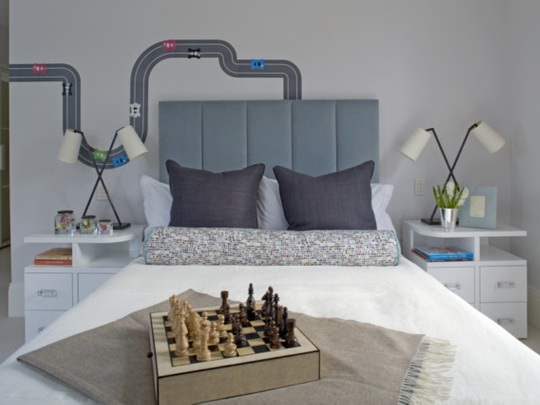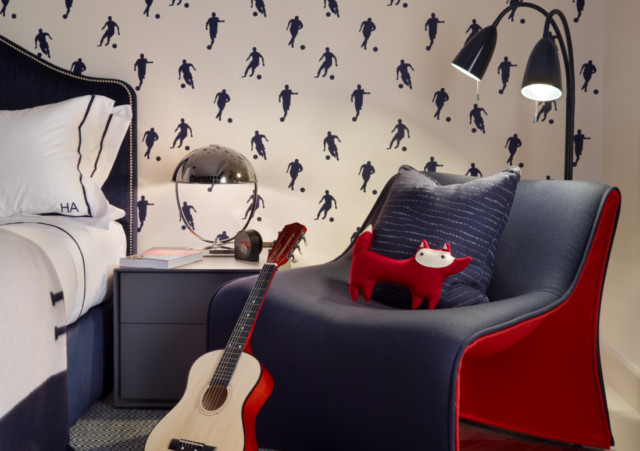
If you were to believe any of the home-makeover shows on the television, prepare to create a miniature Disneyland in your children’s bedrooms. While I am on board with the concept of “no rules” when it comes to a child’s own space, I beg to differ on the way home-makeover shows go about it. Yes, the rooms should be fun, vibrant and quite frankly, one can get away with a lot more when it comes to designing spaces for children, but let’s not throw basic practicality to the wind.
New age parenting sees us asking children’s opinions on everything and their room is no exception; as adults we need to be discerning. Creating a “Barbie” or “Hulk” room is all good, but as much as it will cost, your child will out-live it in a blink. The idea is to strike a balance between a fun, playful room that will grow with the child and more importantly, provide him a zone that is his sanctuary.
PERSONALITY
The easiest way to make a child appreciate his room is to involve him while creating it. Ask their opinion on colours, take them along for shopping of furniture, etc, and ask them how they want to feel in the room. As parents you know your children’s tastes and hobbies best; use that information. By bringing in their favourite cartoon characters and themes through key design elements such as lamps, chairs or a wallpaper, the room will cater to their requirements without going overboard.
ECO IS GOOD
A child’s room is his safe space. Emotionally, of course, it provides shelter from the world out there, but this approach can be applied to room design as well. Don’t use traditional wallpapers, lacquer, and synthetic paint that give out chemical emissions over time. Invest in organic paints such as Ecos Paint. Recyclable decals are also a good option if you are looking for an instant pick me up — Wall Sticker Shop has some amazing alternatives at low prices. Instead of nylon pile carpets try bamboo wood flooring — it is these small gestures that go a long way.
GO MONOCHROME
Monochromes can seem a bit grown up for a child’s room, but not only does the simplified palette make your child’s room look bigger than it actually is, it provides the perfect backdrop for both you and your child to invest in over time. A lighter colour palette instantly lifts the mood of any room and for a child, we always want a happy, light and airy space. Once you have decided on the key colours for the walls and ceilings, layer the room with contrasting textures, finishes and materials that can be easily changed as your child’s taste and interests evolve. For easy maintenance, opt for a lighter shade of dove grey if you think white would be a hassle.
ROOM FOR TWO
If your children share a room, you already know how it plays out. One of them will forever be complaining about not having his or her own things and the other would be in your hair over her space being taken over. Yet, until they can both have their own rooms, employ colour to define spaces. Start by visually dividing the space into two (equal if possible!) halves. Paint walls in each one’s favourite colours to demarcate ownership and then kit each side out with furniture in keeping with the individual’s taste, needs and hobbies.
— Pratyush Sarup edits design blog designcarrot.co









